What You Need To Know About Artificial Fragrances – Unraveling the Mysteries of Artificial Fragrances and 8 Critical Dangers to Your Health
The Scented World: Unraveling the Mysteries of Artificial Fragrances
Overview
Imagine walking through a lush garden, the air filled with the sweet aroma of blooming flowers. Fragrances have the power to evoke memories, enhance our moods, and even transport us to different places and times. In today’s world, we encounter synthetic aroma chemicals everywhere – from perfumes and scented candles to air fresheners and cleaning products. But how much do we really know about artificial fragrances, their origins, their impact on our health, and the alternatives available to us?
What are Artificial or Synthetic Fragrances?
Artificial or synthetic aroma chemicals are scents created using chemical compounds in a laboratory setting, designed to mimic the aromas found in nature. These synthetic aroma chemicals are commonly used in a wide range of consumer products, including perfumes, colognes, personal care items (such as shampoos, soaps, and lotions), cleaning products, air fresheners, and more.
Key characteristics of artificial or synthetic fragrances include:
- Chemical Composition: Synthetic aroma chemicals are composed of various chemicals, many of which are not naturally derived. These chemicals are carefully blended to create specific scents.
- Consistency: Synthetic aroma chemicals offer consistency in scent, ensuring that a product retains its desired aroma over time. This consistency is often challenging to achieve with natural fragrances due to variations in crop quality and growing conditions.
- Versatility: Manufacturers can create a vast array of scents using synthetic aroma chemicals, from floral and fruity to woody and musky, providing greater flexibility in product development.
- Cost-Effectiveness: Synthetic aroma chemicals are often more cost-effective to produce than natural fragrances, making them a popular choice for mass-produced consumer goods. However, that does not mean they are good for your health. As a matter of fact, they are detrimental to your health.
- Longevity: Synthetic aroma chemicals tend to have longer-lasting scents compared to many natural alternatives, which may evaporate more quickly.
It’s important to note that while synthetic aroma chemicals offer benefits in terms of cost, consistency, and versatility, they can also pose potential health risks, as discussed in previous responses. These risks include allergic reactions, respiratory issues, hormone disruption, migraines, and sensitivity in some individuals.
Consumers interested in avoiding synthetic aroma chemicals may choose fragrance-free or unscented products and explore natural alternatives such as essential oils or botanical extracts to enjoy scents without the potential drawbacks of synthetic fragrances.
The Origins and Sources of Artificial Fragrances
To understand artificial or synthetic aroma chemicals, we must first explore their origins. Fragrances can be broadly categorized into two types: natural and synthetic.
- Natural Fragrances: These are derived from plant and animal sources. For thousands of years, humans have extracted essential oils and resins from plants and used them to create synthetic aroma chemicals. Examples include lavender essential oil, obtained from lavender flowers, and ambergris, a substance produced in the digestive systems of sperm whales.
- Synthetic Fragrances: These are man-made compounds created in laboratories. They are designed to replicate the scents found in nature and often serve as the key ingredients in perfumes, cosmetics, and household products. Synthetic aroma chemicals offer versatility and consistency, allowing manufacturers to produce a wide range of scents.
The majority of synthetic aroma chemicals encountered in everyday products are synthetic, as they are more cost-effective and readily available.
How Are Synthetic or Artificial Fragrances Produced?
Synthetic fragrances are created through a complex process that involves the synthesis of various chemical compounds to mimic the scents found in natural sources. Here is an overview of how synthetic aroma chemicals are produced:
- Chemical Synthesis: Synthetic aroma chemicals are primarily composed of various chemical compounds. These compounds are often synthesized in laboratories through chemical reactions. Chemists use a combination of organic and inorganic chemicals to create the desired aromatic compounds.
- Compound Selection: Perfumers and fragrance chemists select specific chemical compounds to replicate the desired scent. These compounds can be chosen from a vast library of synthetic aroma chemicals, each with its own characteristic scent profile.
- Blending: The selected aroma chemicals are carefully blended in precise quantities to create the desired fragrance profile. The blending process is akin to creating a recipe, where each component contributes to the final scent.
- Quality Control: Fragrance houses and manufacturers conduct rigorous quality control tests to ensure the consistency and stability of the fragrance. These tests assess factors like color, scent intensity, and chemical composition.
- Dilution and Carrier Oils: The concentrated fragrance mixture is often diluted with carrier oils or solvents to create a final product with the desired strength. Carrier oils help disperse the fragrance evenly and allow for easier application in products like perfumes and colognes.
- Incorporation into Products: The final fragrance formulation is integrated into various consumer products, such as perfumes, cosmetics, detergents, and air fresheners. The specific application methods and concentrations vary depending on the product type.
- Packaging: The finished products are packaged for sale to consumers. Labels on these products may list “fragrance” or “parfum” on the ingredients list, which can encompass a mix of individual aroma chemicals.
It’s important to note that the exact methods and ingredients used in fragrance production can vary among manufacturers and are often considered proprietary information. The fragrance industry closely guards the recipes and formulas for specific scents to protect their intellectual property. However, if you notice, there has been no mention of safety when these chemicals are produced.
The Impact of Artificial Fragrances on Your Health
While artificial fragrances can make our world smell better, there are concerns about their impact on human health. Several health-related issues have been linked to the use of these synthetic chemicals:
- Allergic Reactions: Many people experience skin irritation, headaches, or respiratory issues when exposed to synthetic aroma chemicals. These reactions can be triggered by the numerous chemicals used to create fragrances, some of which are known allergens. Many fragrance ingredients are known allergens and can cause allergic contact dermatitis. This skin condition is characterized by redness, itching, and rash formation upon contact with the allergen. Fragrance allergies can affect both children and adults.
- Chemical Sensitivities: Some individuals suffer from Multiple Chemical Sensitivity (MCS), a condition characterized by heightened sensitivity to chemicals, including synthetic fragrances. For them, even a slight exposure can lead to severe symptoms.
- Indoor Air Quality: Household products such as air fresheners, cleaning supplies, and scented candles can release volatile organic compounds (VOCs) into the air, contributing to indoor air pollution. Prolonged exposure to these pollutants can harm respiratory health.
- Endocrine Disruption: Certain synthetic fragrance compounds may disrupt the endocrine system, potentially affecting hormone balance and reproductive health.
- Asthma and Respiratory Issues: Synthetic aroma chemicals can trigger or exacerbate asthma symptoms and other respiratory problems, particularly in individuals with pre-existing conditions. The inhalation of volatile organic compounds (VOCs) released by synthetic aroma chemicals can irritate the respiratory tract, leading to symptoms like coughing, wheezing, and shortness of breath.
- Hormone Disruption: Some fragrance chemicals, such as phthalates, have been linked to endocrine disruption. Phthalates are used as fixatives in many fragrances and have been associated with adverse effects on hormone function, potentially impacting reproductive health and development.
- Migraines and Headaches: Synthetic aroma chemicals are a common trigger for migraines and tension headaches in susceptible individuals. The strong and often artificial scents can lead to discomfort and pain.
- Multiple Chemical Sensitivity (MCS): Some people experience a condition called Multiple Chemical Sensitivity, which can be triggered or exacerbated by exposure to synthetic aroma chemicals. MCS is characterized by extreme sensitivities to various chemicals, including those found in fragrances, leading to a range of symptoms.
It’s essential to be aware of these potential health risks and consider reducing your exposure to synthetic aroma chemicals, especially if you or someone in your household is sensitive or has a pre-existing health condition. Choosing fragrance-free or naturally scented products and improving indoor air quality can help minimize these risks.
Risks and Precautions
To mitigate the potential risks associated with artificial fragrances, consider these precautions:
- Read Labels: Check product labels for the term “fragrance” or “parfum.” Manufacturers are not required to disclose the specific ingredients in their fragrances due to trade secret protection. Opt for products that list natural fragrance sources.
- Choose Unscented Products: Select fragrance-free or unscented versions of personal care and cleaning products to minimize your exposure to synthetic aroma chemicals.
- Ventilate Indoor Spaces: Improve indoor air quality by ensuring proper ventilation and avoiding the excessive use of air fresheners.
- Patch Test: Before using new fragranced products, perform a patch test to check for allergic reactions or sensitivities.
- Natural Alternatives: Explore natural fragrances, such as essential oils, as alternatives to synthetic scents.
How to Avoid Synthetic or Artificial Fragrances in Your Daily Life
Avoiding synthetic fragrances in your daily life can be a health-conscious choice. Here are practical steps you can take to reduce your exposure to synthetic aroma chemicals:
- Read Product Labels: Carefully read the labels of personal care products, cleaning supplies, and household items. Look for products that explicitly state they are “fragrance-free,” “unscented,” or use natural fragrances.
- Choose Natural and Organic Brands: Select products from brands that prioritize natural and organic ingredients. These brands often avoid synthetic fragrances and harmful chemicals.
- Make Your Own Cleaning Products: Create homemade cleaning solutions using simple ingredients like baking soda, vinegar, and essential oils. You can customize the scent with natural fragrances like lavender or lemon.
- Use Natural Personal Care Products: Look for personal care products like shampoos, conditioners, and body washes that use essential oils or botanical extracts for fragrance.
- Opt for Unscented Laundry Detergent: Choose fragrance-free or unscented laundry detergents and fabric softeners to avoid synthetic chemicals clinging to your clothes.
- Ditch Air Fresheners: Avoid aerosol sprays, plug-in air fresheners, and scented candles. Instead, open windows for ventilation or use natural alternatives like fresh flowers or essential oil diffusers.
- Check Household Products: Examine your household items like trash bags, plastic containers, and kitchen towels. Some of these products may contain hidden synthetic fragrances.
- Switch to Natural Pest Control: Avoid using chemical pesticides and opt for natural pest control methods or products.
- Educate Yourself: Learn about chemicals commonly found in synthetic fragrances, such as phthalates, and stay informed about potential health risks.
- Advocate for Fragrance-Free Environments: Encourage your workplace, schools, and public spaces to adopt fragrance-free policies to accommodate individuals with chemical sensitivities.
Remember that fragrance ingredients can be hidden behind terms like “parfum” or “fragrance,” making it challenging to identify them. The fewer scented products you use, the better you can control your exposure to synthetic chemicals.
In What Products Are Artificial or Synthetic Fragrances Found?
Synthetic or artificial fragrances are found in a wide range of consumer products. These fragrances are added to enhance the scent of products or to mask undesirable odors. Here is a list of common products that often contain synthetic fragrances:
- Perfumes and Colognes: These are obvious examples where synthetic fragrances are used to create unique scents.
- Personal Care Products: Items like shampoos, conditioners, body washes, soaps, lotions, deodorants, and cosmetics frequently contain synthetic fragrances.
- Household Cleaning Products: Many cleaning products, such as all-purpose cleaners, dishwashing detergents, laundry detergents, and surface sprays, are scented with synthetic fragrances.
- Air Fresheners: Air fresheners in various forms, including aerosol sprays, plug-ins, solid gels, and reed diffusers, rely heavily on synthetic aroma chemicals.
- Candles: Scented candles often contain synthetic fragrance oils to create pleasing aromas when burned.
- Fabric Softeners and Dryer Sheets: These products use synthetic aroma chemical to impart a fresh scent to clothes and linens.
- Toilet Paper and Tissues: Some brands add synthetic fragrances to toilet paper and tissues for a more pleasant experience.
- Household Products: Synthetic fragrances can be found in a range of household items, including trash bags, plastic storage containers, and even some types of paper towels.
- Personal Fragrance Products: Items like scented sachets, potpourri, and fragrance sachets often contain synthetic fragrances.
- Baby Products: Some baby products, such as baby lotions, shampoos, and wipes, may also contain synthetic fragrances.
- Pet Products: Certain pet shampoos, grooming sprays, and pet odor eliminators may use synthetic fragrances to mask pet odors.
- Office Supplies: Some office products, like scented markers and air fresheners for workspaces, may contain synthetic fragrances.
- Food Packaging: Synthetic aroma chemicals can sometimes be found in food packaging materials to create a pleasant aroma when the packaging is opened.
It’s important to note that synthetic aroma chemicals can be labeled simply as “fragrance” or “parfum” on product labels, and manufacturers are not required to disclose the specific chemicals used in the fragrance blend due to trade secret protection. This lack of transparency can make it challenging for consumers to identify which products contain synthetic fragrances. If you’re looking to avoid these synthetic aroma chemicals, consider choosing products labeled as “fragrance-free” or “unscented” and explore natural alternatives.
Natural Alternatives
Natural alternatives to synthetic fragrances offer a safer and more eco-friendly choice. Here are a few examples:
- Essential Oils: These concentrated oils, extracted from plants, can be used in diffusers, homemade perfumes, and cleaning products. Lavender, eucalyptus, and citrus oils are popular choices.
- Herbs and Spices: Dried herbs and spices like cinnamon sticks, vanilla beans, or dried lavender buds can add natural fragrance to your home.
- Potpourri: Dried flower petals, leaves, and spices can be combined to create a delightful potpourri.
- Homemade Perfumes: Create your own signature scent using a blend of essential oils and carrier oils like jojoba or almond oil.
After Thoughts
In conclusion, artificial fragrances, which are commonly found in personal care products, cleaning supplies, and household items, have become integral to our daily lives. However, they come with a range of potential health risks, including asthma and respiratory issues, allergic reactions, hormone disruption, migraines, and the exacerbation of Multiple Chemical Sensitivity (MCS). These health concerns stem from the complex mix of synthetic chemicals used to create fragrances, many of which are undisclosed due to trade secret protection. Additionally, synthetic aroma chemicals can contribute to indoor air pollution, affecting overall indoor air quality.
To minimize health risks associated with synthetic fragrances, individuals can take proactive steps. These include reading product labels, choosing natural and organic alternatives, making homemade cleaning products, using fragrance-free or unscented options, and advocating for fragrance-free environments in shared spaces.
Exploring natural alternatives such as essential oils, herbs, and spices allows individuals to enjoy pleasant scents without the potential health risks associated with synthetic aroma chemicals.
It is crucial to stay informed about the ingredients in the products you use and consider the potential health implications, especially for those with sensitivities or pre-existing health conditions.
By making informed choices and reducing exposure to synthetic fragrances, individuals can create healthier living spaces and prioritize their well-being.
For natural and healing remedies, products, and supplements to help you live your most optimal healthy life, visit our store here!
Remember: Own Your Health!
If you enjoyed the information presented in this article, Please Share It. Help us reach more people and keep this website going! Thank you!
Disclaimer: The information provided in this article is for informational purposes only and should not be considered as medical advice. Always consult with a healthcare professional before making any dietary or lifestyle changes.
References:
- Steinemann, A. (2019). Fragranced consumer products and effects on asthmatics: an international population-based study. Air Quality, Atmosphere & Health, 12(6), 643-649.
- Environmental Working Group (EWG). (2021). Not So Sexy: The Health Risks of Secret Chemicals in Fragrance. https://www.ewg.org/research/not-so-sexy
- Anderson, R. C., & Anderson, J. H. (1998). Acute toxic effects of fragrance products. Archives of Environmental Health: An International Journal, 53(2), 138-146.
- National Institute of Environmental Health Sciences (NIEHS). (2021). Endocrine Disruptors. https://www.niehs.nih.gov/health/topics/agents/endocrine/index.cfm
- Edwards, D., & Wilson, D. (2009). Analysis of Fragrance Raw Materials by Gas Chromatography and Mass Spectrometry. John Wiley & Sons.
- Baser, K. H. C., & Demirci, B. (2007). Chemistry of Essential Oils. In Flavours and Fragrances: Chemistry, Bioprocessing and Sustainability (pp. 43-86). Springer.
- Joulain, D., & König, W. A. (2012). The Atlas of Spectral Data of Sesquiterpene Hydrocarbons. EB-Verlag.
- Burdock, G. A., & Fenaroli, G. (2010). Fenaroli’s Handbook of Flavor Ingredients. CRC Press.
- Wilson, C. L., & Beroza, M. (2012). Fragrance Compounds. In Kirk-Othmer Encyclopedia of Chemical Technology (Vol. 11, pp. 651-699). John Wiley & Sons.
- U.S. National Library of Medicine – MedlinePlus. (2021). Fragrances and Perfumes. https://medlineplus.gov/fragrancesandperfumes.html
- Environmental Working Group (EWG). (2021). Not So Sexy: The Health Risks of Secret Chemicals in Fragrance. https://www.ewg.org/research/not-so-sexy
- American Lung Association. (2021). Fragrance-Free Living. https://www.lung.org/clean-air/at-home/indoor-air-pollutants/fragrance-free-living
- Women’s Voices for the Earth. (2021). Ditch the Chemicals: Why to Choose Fragrance-Free. https://www.womensvoices.org/fragrance-ingredients/why-choose-fragrance-free/
- Caress, S. M., & Steinemann, A. C. (2009). Prevalence of Fragrance Sensitivity in the American Population. Journal of Environmental Health, 71(7), 46-50. https://pubmed.ncbi.nlm.nih.gov/19240858/
- Schnuch, A., Uter, W., Geier, J., Lessmann, H., Frosch, P., & Lehmacher, W. (2007). Sensitization to 26 fragrances to be labelled according to current European regulation. Contact Dermatitis, 57(1), 1-10. https://pubmed.ncbi.nlm.nih.gov/17598851/
- Swan, S. H., Main, K. M., Liu, F., Stewart, S. L., Kruse, R. L., Calafat, A. M., … & Redmon, J. B. (2005). Decrease in Anogenital Distance Among Male Infants With Prenatal Phthalate Exposure. Environmental Health Perspectives, 113(8), 1056-1061. https://pubmed.ncbi.nlm.nih.gov/16079079/
- Kelman, L. (2007). The Triggers or Precipitants of the Acute Migraine Attack. Cephalalgia, 27(5), 394-402. https://pubmed.ncbi.nlm.nih.gov/17403053/
- Caress, S. M., & Steinemann, A. C. (2003). A Review of a Two-Phase Population Study of Multiple Chemical Sensitivities. Environmental Health Perspectives, 111(12), 1490-1497. https://pubmed.ncbi.nlm.nih.gov/12948897/
- Steinemann, A. (2018). Fragranced consumer products and effects on asthmatics: an international population-based study. Air Quality, Atmosphere & Health, 12(6), 643-649. https://pubmed.ncbi.nlm.nih.gov/29651408/
- Lachenmeier, D. W., & Habel, S. (2008). A study of the contents of psychoactive substances in products of plant origin available in the Czech Republic. Forensic Science International, 178(2-3), 215-219. https://pubmed.ncbi.nlm.nih.gov/18374973/
- Steinemann, A. (2019). Exposure Assessment Studies of Fragranced Consumer Products. Air Quality, Atmosphere & Health, 12(6), 643-649. https://pubmed.ncbi.nlm.nih.gov/31595341/
- Berger, A., & Noguchi, K. (2008). Personal care products and endocrine disruption: A critical review of the literature. Critical Reviews in Toxicology, 38(3), 327-357. https://pubmed.ncbi.nlm.nih.gov/18357522/
- Anderson, R. C., & Anderson, J. H. (1998). Acute toxic effects of fragrance products. Archives of Environmental Health: An International Journal, 53(2), 138-146. https://pubmed.ncbi.nlm.nih.gov/9578041/

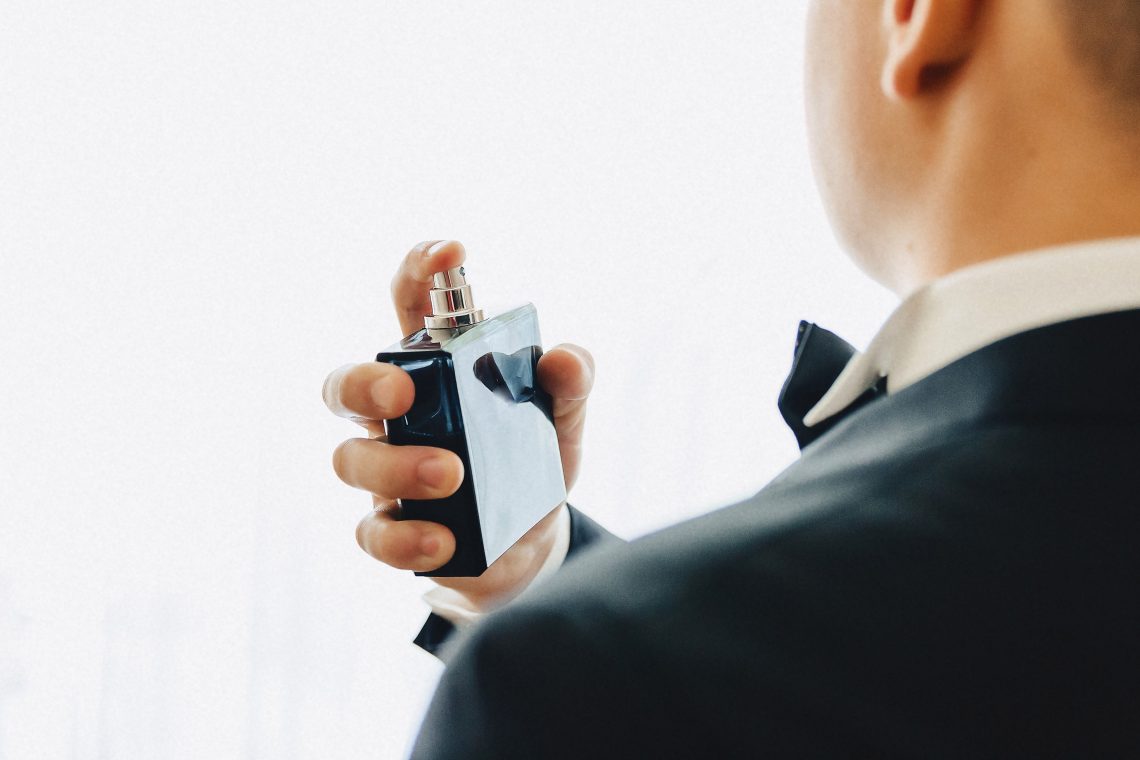
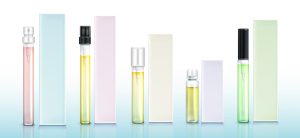

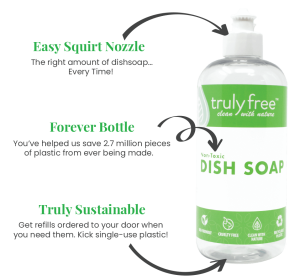
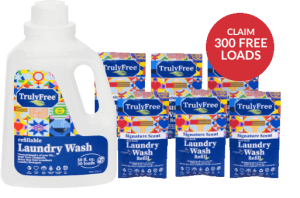



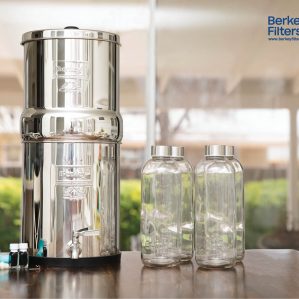
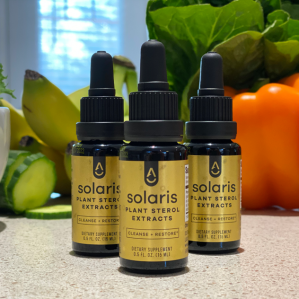
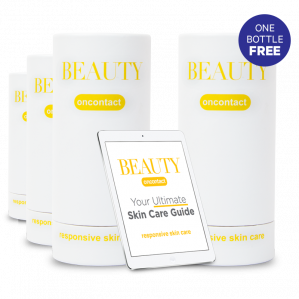
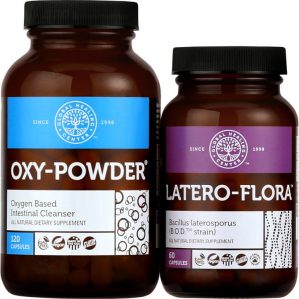
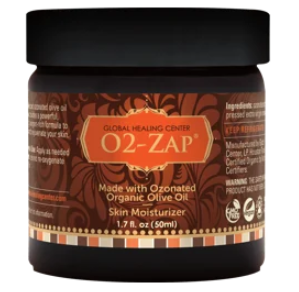











1 Comment
[…] Artificial or synthetic musks are chemical compounds designed to mimic the scent of natural musk, a substance historically obtained from the glands of musk deer and other animals. These synthetic fragrances are used extensively in the perfume and cosmetics industry to impart a musky fragrance to various products. There are two main categories of synthetic musks: nitro musks and polycyclic musks. […]